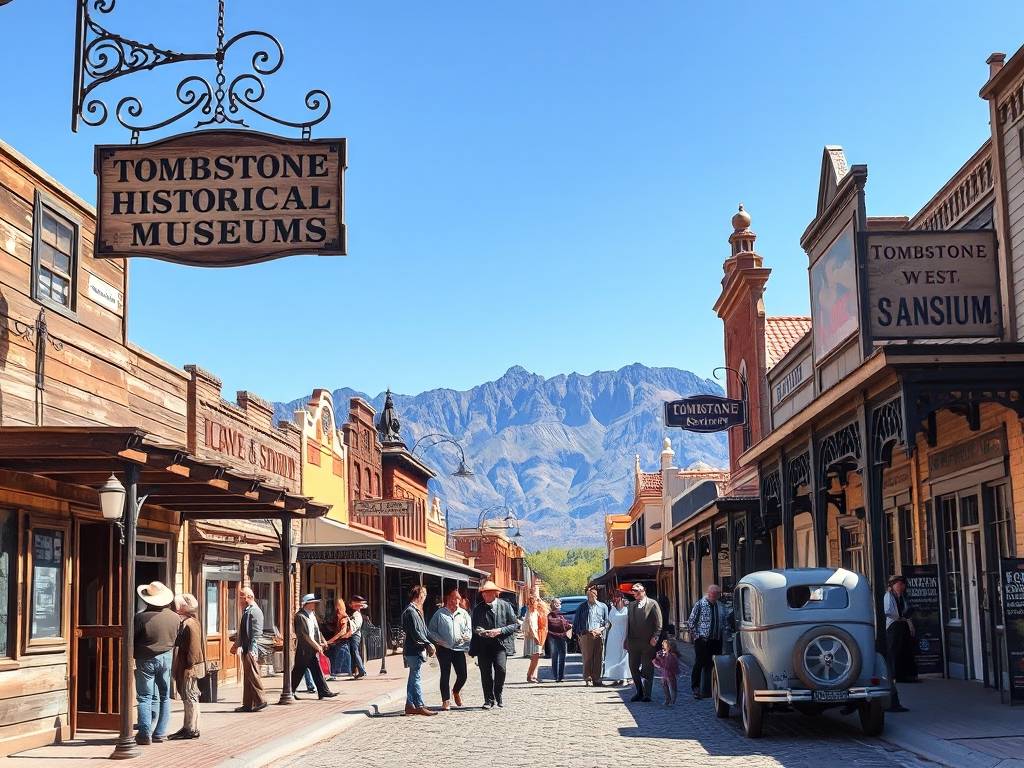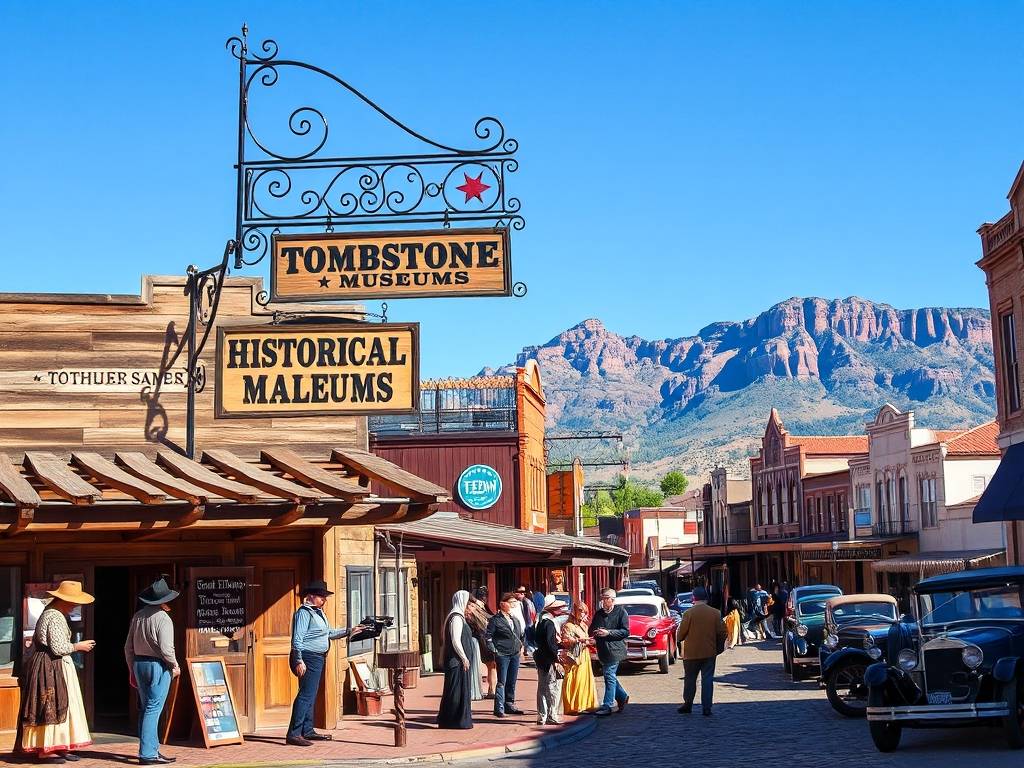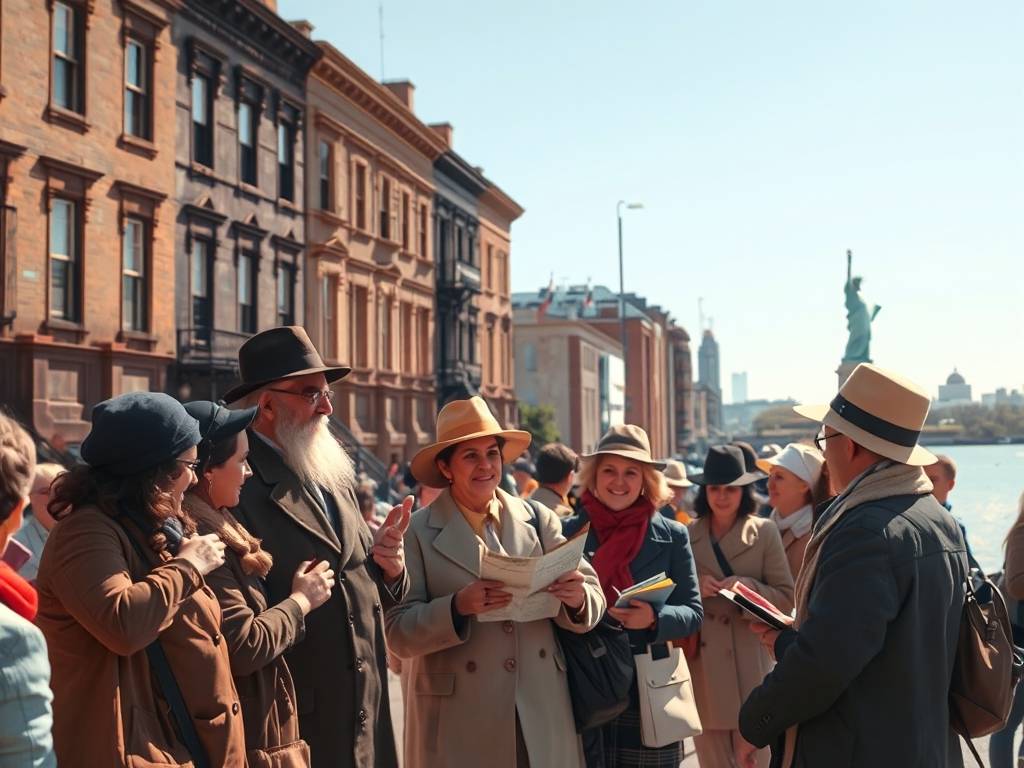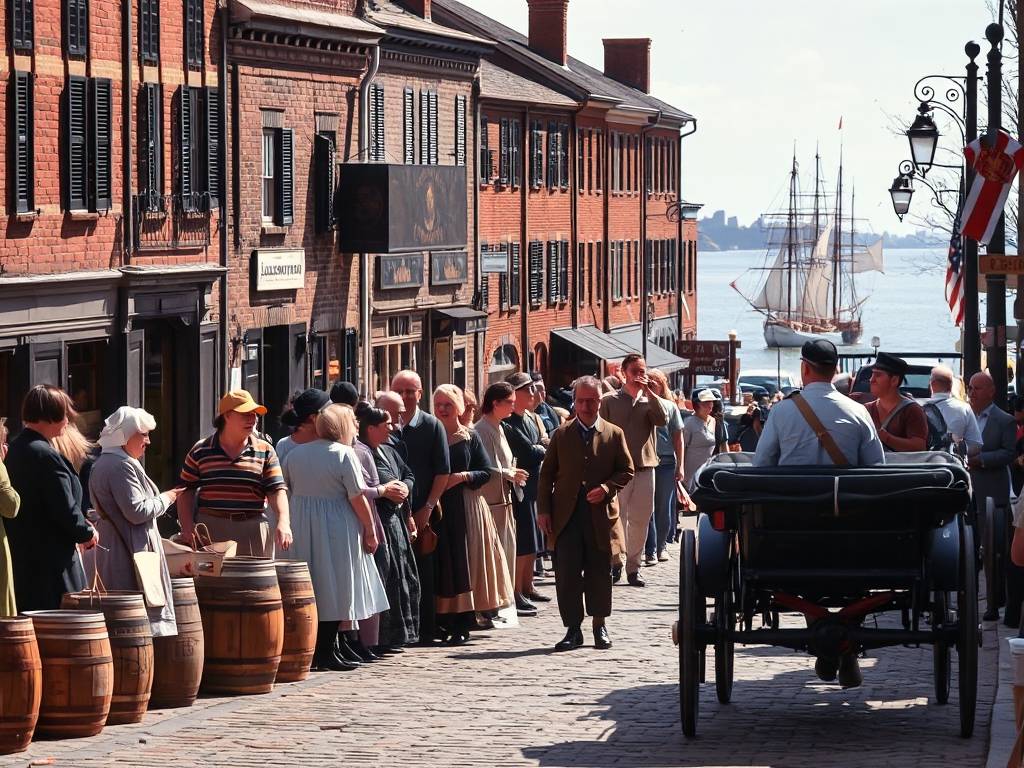USA Travel
US Travel: Wild West History Museums in Arizona’s Tombstone
Echoes of the Frontier: Unraveling the Wild West in Tombstone, Arizona
The very name sends a shiver down the spine, conjuring images of dust, determination, and the deafening report of a Colt revolver. Tombstone, Arizona, isn't just a town; it's a portal. While the Hollywood version of the Wild West is often a romanticized myth, a visit to Tombstone’s history museums offers something far more profound: a tangible, authentic, and deeply human connection to a pivotal era in American history. This isn't about watching a movie; it's about walking onto the set and hearing the whispers of the past. For any traveler seeking to truly understand the American frontier, a deep dive into Tombstone's Wild West history museums is an unforgettable journey.

More than just a collection of artifacts, these institutions work in concert to solve the central puzzle of this legendary town. They answer not just the "what" and "when," but the "who" and "why." They transport you beyond the gunfights to explore the lives of the miners, the madams, the merchants, and the everyday people who built a community in one of the most unforgiving landscapes imaginable. Your exploration of Arizona's authentic frontier history begins here, in the very streets where history was made.

The Crown Jewel: Tombstone's Courthouse State Historic Park
Often, the best place to start a historical investigation is at the end. The Tombstone Courthouse State Historic Park is, without a doubt, the essential primer for your visit. This elegant, two-story brick building, now a museum operated by Arizona State Parks, was the seat of Cochise County law from 1882 to 1929. Stepping inside is like stepping into the official record of Tombstone’s tumultuous life.
The museum’s exhibits are meticulously curated, providing a comprehensive overview that grounds the town's legends in fact. Here, you will find:
- The Law and the Lawless: Explore detailed exhibits on the infamous Earp-Clanton feud. You'll see period weapons, photographs, and courtroom sketches that detail the events leading up to and following the Gunfight at the O.K. Corral. This isn't sensationalized; it's presented with the sober clarity of a legal document, allowing you to form your own conclusions.
- A Deeper Social History: Beyond the outlaws, the courthouse reveals the fabric of frontier society. Examine mining equipment that tells the story of the hard-rock miners who were the town's economic lifeblood. See recreated period rooms, including a lawyer's office and a sheriff's office, that make daily life in the 1880s feel immediate and real.
- The Hanging Gallery: Perhaps the most chilling exhibit is the original gallows, still standing in the courtyard. It’s a stark reminder of the ultimate price of frontier justice and adds a sobering layer to the narrative of crime and punishment.
The courthouse provides the crucial context. It answers the broader questions about territorial Arizona life and governance, setting the stage for you to explore the more specific, location-based stories at other sites. It’s the "big picture" museum that makes the smaller details elsewhere so much more meaningful.
Walking the Grounds: The O.K. Corral & Historama
No discussion of things to do in Tombstone for history buffs is complete without addressing the most famous 30 seconds in the town's history. The O.K. Corral today is a historic site and museum that has masterfully preserved the exact location of the legendary gunfight. While it is a major tourist attraction, its historical value is significant.
The experience here is immersive. You don't just read about the event; you stand in the very alley where it happened. The site features life-sized bronze statues of the Earp brothers and Doc Holliday facing off against the Clantons and McLaurys, frozen in time. This visceral connection to the geography of the fight is powerful. Furthermore, the site includes other key attractions:
- The Historama: This long-running narrated show, featuring a rotating diorama and film, offers a condensed and entertaining overview of Tombstone's boom and bust cycle. It's a great, family-friendly introduction.
- The Epitaph Museum: Housed in the original office of the Tombstone Epitaph newspaper, one of the oldest continuously published papers in the U.S., this exhibit highlights the role of the press in shaping the legend. Seeing the original printing press and reading the firsthand accounts from 1881 brings a level of immediacy that modern media cannot replicate.
- C.S. Fly Photography Gallery: Fly was one of the West's most renowned frontier photographers. His gallery showcases stunningly clear images of Apache leaders like Geronimo, as well as scenes from daily life in Tombstone. His work provides an irreplaceable visual record of the people and places of the era.
Visiting the O.K. Corral complex answers the "where" with absolute certainty and enriches the story with primary sources and visual evidence.
Beyond the Gun smoke: The Tombstone Historama and Rose Tree Museum
A common pitfall in understanding the Wild West is focusing solely on its violence. Tombstone’s museums brilliantly correct this by celebrating the town’s resilience and its surprisingly refined side. A short walk from Allen Street leads you to the Tombstone Historama, which, in addition to its show, is part of a larger complex, and the Rose Tree Museum.
This museum is home to a world-record holder and a symbol of enduring life: the world's largest rose tree. Planted in 1885, this Lady Banksia rose now covers over 8,000 square feet. It is a living, breathing piece of history, a testament to the settlers who sought to create beauty and a sense of permanence in the harsh desert. The museum itself is packed with a fascinating collection of everyday artifacts—clothing, furniture, and household items—that belonged to Tombstone's founding families. It’s a poignant reminder that for all the lawlessness, this was a place people called home. Exploring this museum is a key part of any Tombstone Arizona travel guide focused on a holistic historical experience.
Planning Your Pilgrimage to the Past
To make the most of your trip to these incredible repositories of Arizona's authentic frontier history, a little planning goes a long way.
- Itinerary for History Lovers: Dedicate at least a full day, if not two. Start at the Courthouse State Historic Park for the overarching narrative. Then, spend your afternoon on Allen Street, taking in the O.K. Corral, the Epitaph, and the various other smaller exhibits. Save the Rose Tree Museum for a quieter, reflective end to your day.
- Engage with the Experts: Don't be shy! The staff and docents at these museums, particularly the state park, are incredibly knowledgeable. They often share fascinating tidbits and stories you won't find in any guidebook. Asking questions about family-friendly Wild West attractions or the lesser-known figures of Tombstone can greatly enrich your visit.
- Look for Combo Tickets: Many of the attractions, especially around the O.K. Corral area, offer combination tickets that provide significant savings if you plan to see multiple sites.
- Walk the Town: The museums are the highlight, but the entire town of Tombstone is a living museum. Stroll down Allen Street, peek into the Bird Cage Theatre (another time capsule of entertainment and vice), and simply absorb the atmosphere. The creak of the boardwalks and the period-dressed interpreters all contribute to the feeling of having stepped back in time.
Tombstone’s history museums are not silent halls of glass cases; they are vibrant, interconnected storytellers. Together, they peel back the layers of legend to reveal the true, complex, and utterly compelling story of the American West. They solve the user's quest for a genuine historical experience by providing context, primary evidence, personal stories, and a direct physical connection to the past. So, pack your sense of adventure, leave your modern hurry at the city limits, and come listen to the echoes of the frontier. In Tombstone, the past isn't dead; it's waiting for you on every corner.
相关文章
- US Travel: Native American Powwow Experiences in Oklahoma
- US Travel: Historic Lighthouse Tours in Maine’s Portland Head
- US Travel: WWII Museum Visits in Louisiana’s New Orleans
- US Travel: Pioneer History Sites in Nebraska’s Omaha
- US Travel: Art Deco Architecture Tours in Florida’s Miami Beach
- US Travel: Historic Railroad Tours in Colorado’s Durango
- US Travel: African American Heritage Museums in Michigan’s Detroit
- US Travel: Spanish Colonial History Tours in New Mexico’s Santa Fe
- US Travel: Civil War Cemetery Visits in Virginia’s Arlington
- US Travel: Early American Settlement Tours in Massachusetts’s Plymouth
发表评论
评论列表
- 这篇文章还没有收到评论,赶紧来抢沙发吧~


